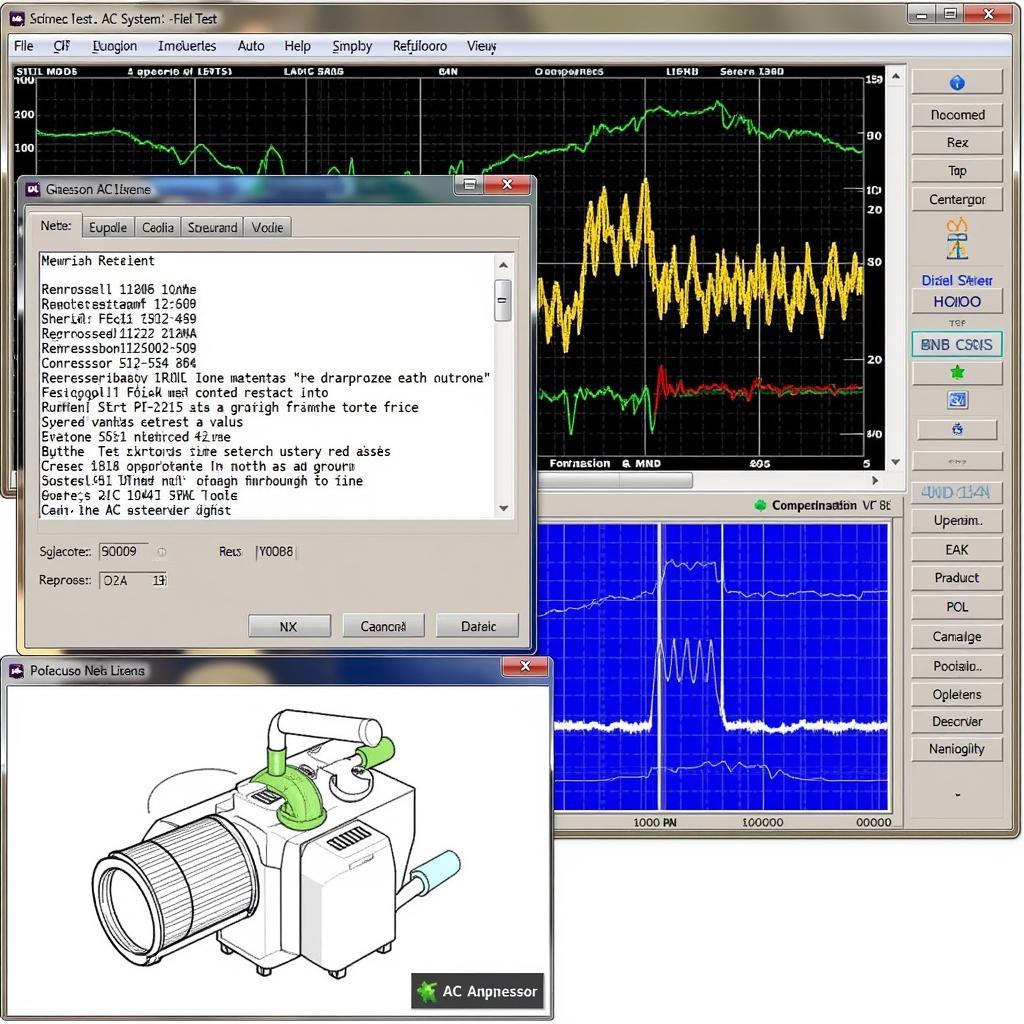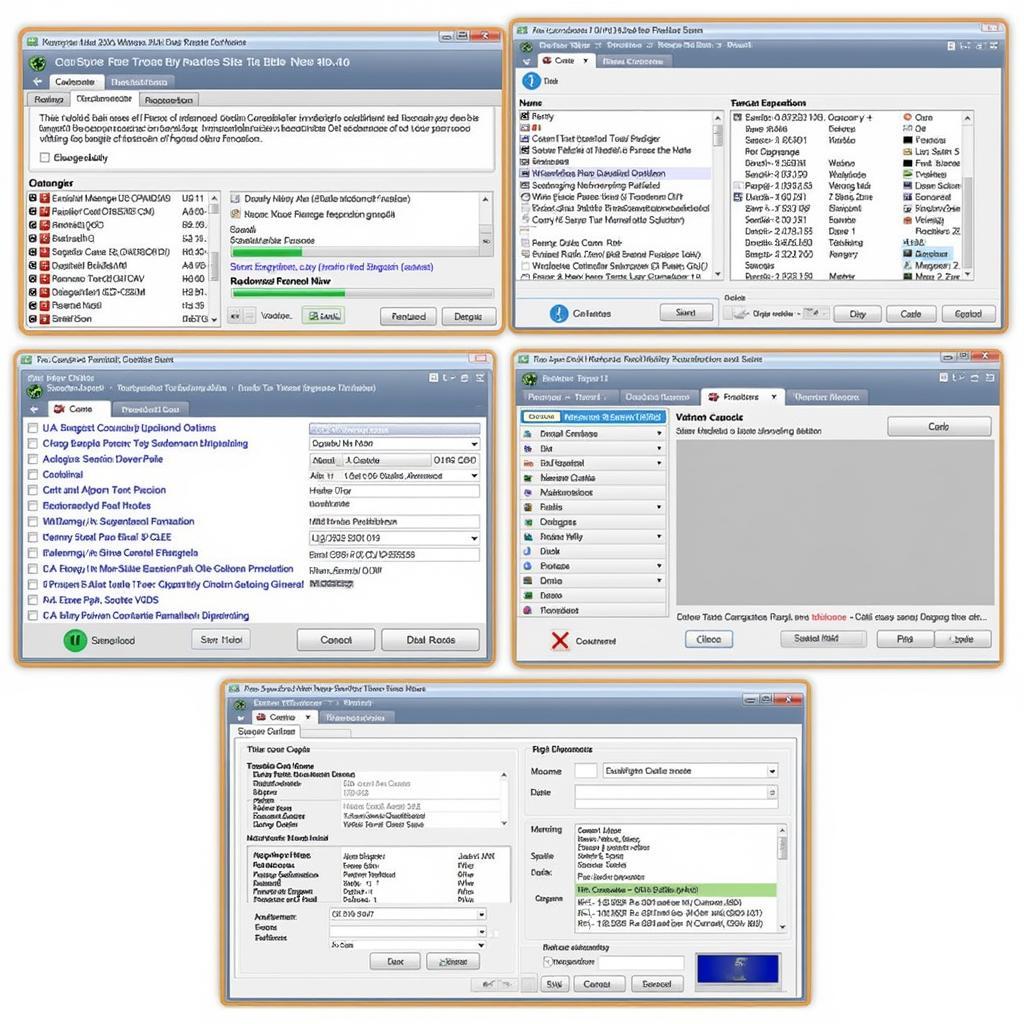VCDS refrigerant pressure readings are crucial for diagnosing and maintaining your car’s AC system. These readings provide valuable insights into the health and efficiency of your air conditioning, helping pinpoint potential issues before they escalate into costly repairs. This article will delve into the importance of VCDS refrigerant pressure, how to interpret the readings, and what common problems they can reveal.
Understanding your car’s AC system can seem daunting, but with the right tools and knowledge, you can take control of its maintenance. VCDS, or VAG-COM Diagnostic System, offers a powerful interface to access your vehicle’s data, including critical information about the refrigerant pressure. This data is essential for identifying problems and ensuring optimal AC performance.
How to Access VCDS Refrigerant Pressure Readings
Accessing refrigerant pressure data using VCDS is straightforward. First, connect your VCDS interface to your vehicle’s OBD-II port and launch the software. Then, select the correct control module for your AC system. Typically, this will be listed as “Climate Control” or similar. Once in the module, navigate to the “Measuring Blocks” or “Live Data” section. Here, you’ll find a list of various parameters, including refrigerant pressure. The exact label for refrigerant pressure might vary depending on the vehicle model, but it usually includes terms like “Refrigerant Pressure,” “A/C Pressure,” or similar. Remember, always refer to your vehicle’s specific repair manual for precise instructions. Similar to how to tell if complressor is running with vcds lite, understanding these readings can help pinpoint AC issues effectively.
Interpreting VCDS Refrigerant Pressure Data
Interpreting VCDS refrigerant pressure data requires understanding the relationship between pressure and temperature. The pressure readings, typically displayed in bar or PSI, reflect the state of the refrigerant within the system. High-side pressure indicates the pressure after the compressor, while low-side pressure reflects the pressure before the compressor. Both values are crucial for diagnosis. Too high or too low pressure can indicate a variety of problems. For instance, low pressure might suggest a refrigerant leak, while excessively high pressure could point to a blockage or a faulty expansion valve. The ideal pressure values vary depending on the ambient temperature and the specific vehicle model. Consulting a pressure-temperature chart for your specific refrigerant type can be immensely helpful in interpreting the readings. Comparing the readings with vcds live data from a properly functioning system can also provide valuable insights.
Common Problems Indicated by VCDS Refrigerant Pressure
VCDS refrigerant pressure readings can reveal various AC system problems. A low refrigerant charge, often indicated by low pressure readings, is a common issue. This can result from leaks, which can be detected using a refrigerant leak detector. Overcharging, indicated by high pressure, can also occur and can strain the system. A faulty compressor, a crucial component of the AC system, can also be diagnosed using VCDS pressure readings. If the compressor is not engaging or is failing, the pressure readings will be abnormal. Similarly, problems with the expansion valve, which regulates refrigerant flow, can be identified through pressure analysis. This is comparable to diagnosing issues with p1654 vcds, where specific fault codes can pinpoint the problem area.
 AC System Components and Pressure Flow
AC System Components and Pressure Flow
“Accurate pressure readings are essential for effective AC diagnostics,” says John Miller, a seasoned automotive diagnostics expert. “VCDS provides a precise and convenient method for accessing this critical data, empowering technicians to pinpoint the root cause of AC problems quickly.”
Using VCDS for AC System Diagnostics
VCDS extends beyond just reading refrigerant pressure. It allows you to perform various tests and activations within the AC system. For instance, you can activate the compressor clutch to verify its operation and monitor pressure changes. You can also control the blower motor speed and monitor temperature sensors to ensure the entire system is functioning correctly. This comprehensive diagnostic capability makes VCDS a valuable tool for any automotive technician or enthusiast. This detailed analysis goes beyond a simple vcds ac test and provides a deeper understanding of the system’s performance.
 VCDS Software Performing AC System Test
VCDS Software Performing AC System Test
“Regularly monitoring your AC system with VCDS can help prevent costly repairs down the line,” adds Miller. “Early detection of pressure abnormalities can allow for timely intervention, preventing minor issues from escalating into major problems.” This is especially valuable for specific car models, much like using vcds golf for Volkswagen Golf diagnostics.
Conclusion
VCDS refrigerant pressure readings offer a vital window into the health of your car’s AC system. Understanding how to access and interpret these readings, combined with knowledge of common AC problems, empowers you to diagnose and maintain your AC system effectively. By utilizing the comprehensive diagnostic capabilities of VCDS, you can keep your AC running smoothly and avoid expensive repairs.
FAQ
- What units are VCDS refrigerant pressure readings typically displayed in? Bar or PSI.
- What does low refrigerant pressure usually indicate? A potential refrigerant leak.
- What can cause excessively high refrigerant pressure? A blockage or faulty expansion valve.
- Can VCDS be used to test the AC compressor? Yes, you can activate the compressor clutch and monitor pressure changes.
- Why is monitoring refrigerant pressure important? It allows for early detection of potential AC system problems.
- What is the difference between high-side and low-side pressure? High-side pressure is after the compressor, low-side is before.
- Where can I find the ideal refrigerant pressure values for my car? Consult a pressure-temperature chart for your refrigerant type and vehicle model.
Need assistance? Contact us via Whatsapp: +1 (641) 206-8880, Email: [email protected], or visit us at 276 Reock St, City of Orange, NJ 07050, United States. Our customer support team is available 24/7.


